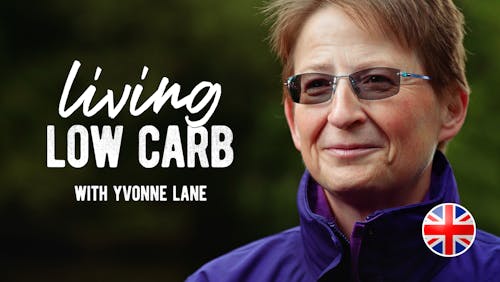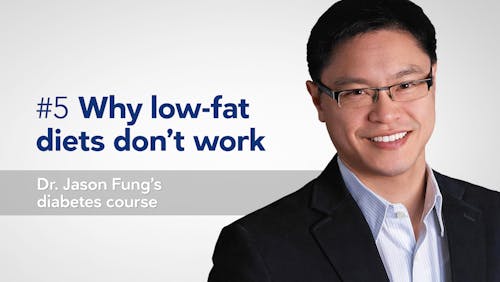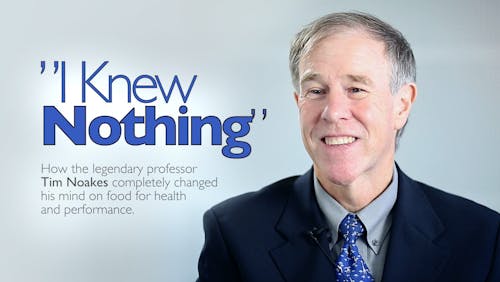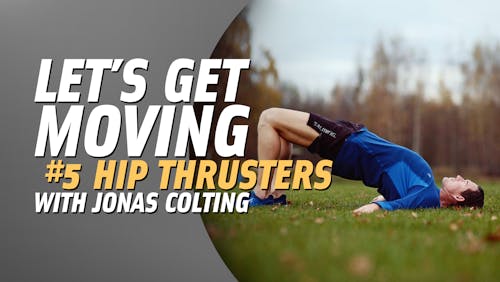Low-carb backpacking – reflections on physical activity, ketosis, and hunger

Just one week after my activity restriction ended following hernia repair surgery, I embarked on a 3-day backpacking trip in the Olympic National Park in Washington state this past August. I might have bitten off more than I could chew, going from postop recovery to hiking the Seven Lakes Basin Loop. But, let’s face it… I was ecstatic that my 6-week moratorium on lifting anything greater than 15 pounds (6.8 kg) was over, and I was a bit stir-crazy, so it sounded like just the thing to get me back into action.
I missed backpacking and other outdoor adventures, things that seemed to all fall victim to being too busy with school, medicine, life, etc. Despite my long hiatus from backpacking, I found it to be an incredible hobby – a primitive interaction between me and nature. Nothing quite matches the satisfaction of carrying one’s own equipment (food, water, shelter, etc.) across a distance, reliant on one’s own physical prowess and resourcefulness to navigate the wilderness.
Nutritional preparation
I had been relatively disciplined with my diet prior to the backpacking trip and had been in ketosis for at least the week prior. My hiking partner, however, was not in ketosis pre-hike, but had been eating relatively low carb.
Based on my experience and the fact that I was in ketosis, I expected not to need much food for the 3-day trip. Here’s what I brought on the trail for sustenance:
- 1 can sardines packed in olive oil
- 1 packet tuna
- “Hippie candy”: almond butter thickened with whey protein, rolled in shredded coconut
- Pemmican
- Water filtration device
In contrast, my hiking partner anticipated needing a lot of food and packed accordingly, but most of that food was ultimately left untouched.



No hunger on the trail
We set out on the trail in the late morning and hiked 7.6 miles (12.2 km) on the first day – day 1 of 3 to cover the 19-mile (30.5 km) loop. We had beautiful 80-degree F (26.7 C) weather, marred only by hazy skies caused by smoke from wildfires in British Columbia, Canada.



It didn’t take long for the trail to remind us that we were poorly prepared from a fitness standpoint, but we were determined to complete our itinerary – failure was never an option. We stopped frequently for water, doing our best to stay hydrated, and only rarely to snack on food with the intent of ensuring that we had adequate fuel even though we weren’t hungry at all.
Not hungry. In fact, not once through our trip did we ever feel hungry. Initially, I thought that maybe being dehydrated might explain why we had no appetite, but that would be opposite of my experience with dehydration up to that moment. Furthermore, even after adequate rehydration at our lakeside campsite, there was no increase in appetite. Rather, it became apparent that our appetites were being suppressed so powerfully by ketosis. It was a familiar (and welcomed) sensation to me – something I had last experienced when in ketosis during the 7-day fasts I had completed.
As I mentioned, I had sensed that I was in ketosis before hitting the trail, so it was not a surprise to me that the grueling uphill climb that first day would have pushed me further into ketosis. What was surprising to me was 1) how quickly my hiking partner entered ketosis and 2) how intense the appetite suppression effect was that we were experiencing.
After setting up camp that first evening, I took a dip in the refreshing alpine lake by our campsite, filled up my water containers, and forced down a few bites of pemmican before retiring in the tent out of reach of the massive armies of mosquitoes.



The following day looked similar – drink lots of water, force down a little food, and hike more than we felt possible. For dinner that night, we decided to make some of the food that had now traveled 14 miles in our packs – not because we were hungry (we still weren’t), but because we were hopeful that it would make the last leg of our trip a little easier.
That meal of sardines mixed with a serving of my friend’s couscous was essentially the only carbohydrates (~15 grams) I ate the whole 3 days. While I would normally never eat couscous, at that point in the trip I was pretty sure that nothing was able to knock me out of ketosis… and from a practical standpoint, all food had to either be eaten or go back in the bear canister.



Recovery
On our drive back home, we even stopped at a restaurant with a vision of treating ourselves to a well-deserved meal to refuel ourselves, but it was comically unsatisfying. I ate a few chicken wings, and my friend indulged in a little poutine. Our legs stiffened from sitting, and our stomachs just weren’t that interested in food. Over the next few days, my appetite gradually returned as I resumed my typical low-carb diet and retreated into a less active (read: struggling just to walk) lifestyle.
Contrasts with high-carb backpacking
My experience with food and hunger on the trail in the Olympics was entirely different from other experiences with intense/prolonged physical exertion. Granted, it had been 26 years since I had last done a strenuous backpacking trip, but I distinctly recall that I was a slave to food (and particularly sugar) on the trail back then.
26 years ago, my fellow scouts and I embarked on a 12-day backpacking trip, and nearly all we could think about was food. Always feeling hungry and never satiated at meals, we felt like we were living on scant rations.
On that scouting adventure, there was no shame at all in eating ANY food (your’s or someone else’s) that might have fallen and landed in the dirt. In fact, because we were always hungry on the trail, I recall that our version of the “5-second rule” was that food left on the ground for 5 seconds was up-for-grabs – we didn’t care about sanitation; we just wanted more food… with or without a dirt coating.
What was so different between then and now?
Easy – I was a carb-junkie back then. “Carbs were king” back in the day, especially as a growing teenage boy who had a voracious appetite. I ate the typical high-carb American diet – fueled mainly by sugars from juice, soda, and digestible carbohydrates (like bread and pasta). Even on the trail, I was eating a continuous supply of Bit-O-Honey candies along the way. Our meals were definitely high-carb – typical camping fare like pasta dishes, pancakes, and oatmeal. The more carbs we ate, the more we wanted.
When it came to fluids, I recall not even being satisfied with water, to the point of having to make lemonade with a powdered (high-sugar) mix in order to quench my thirst. Furthermore, our meals were predictably accompanied by powdered juice mixes to ensure a steady flow of simple sugar.
It’s no wonder that we were so hungry back then, as our bodies essentially knew only how to utilize carbohydrates (glucose) as fuel. As soon as we were depleted of readily available glucose stores, we were miserable with hunger.
Now, I can run on fat. In fact, I feel so much better eating low carb and being fat-adapted that I refuse to go back to a high-carb lifestyle.



Lessons from my backpacking trip
- Ketosis can be induced [rapidly] by physical activity. Those who have experience with fasting are familiar with the appetite suppression that occurs after about 3 days of fasting, after one’s glycogen stores are depleted by our basal metabolism. Those first 3 days would be so much easier, however, if hunger wasn’t even a factor. Dominic D’Agostino, an authority on ketosis, has noted that one can “jumpstart” ketosis with exercise, recommending walking for 2-3 hours, for example, but not recommending vigorous exercise for that purpose.
- Ketosis is a powerful appetite suppressant. Thanks to fat adaptation and ketosis, I was not a slave to food on the trail despite the grueling physical demands I faced. Backpackers and thru-hikers have long been familiar with this phenomenon of appetite suppression, which is clearly an advantage in a situation where one must carry everything that one needs. Consider other potential applications of ketosis, though, such as the ability to function without food in the setting of a natural disaster (e.g. earthquakes, hurricanes, floods) when food is scarce or unreliable. In times of distress, ketosis may serve to be an incredibly valuable survival tool. In the course of a normal day/week, fat adaptation and ketosis allow me to skip meals whenever I need to. I am not a slave to food at any time, and this flexibility allows me to make more thoughtful choices with food.
- Staying busy helps avoid overeating. Overeating was certainly not a risk to me on the trail, but comparing that experience to other times when I am not deeply engaged in activity, it is clear that backpacking provides a favorable distraction from “boredom eating”, which is often unhealthy in terms of quantity and quality of food. When hiking, the incredible plethora of sights/sounds/smells and the persistent need for attention to foot placement are sufficient to occupy one’s attention for long periods of time. As the saying goes, “Idle hands are the devil’s playground.”
- Ketosis and physical activity generates fat/weight loss. Prior to the backpacking trip, my gradual weight loss from eating low carb had pretty much stalled. It’s no surprise that this grueling backpacking trip stimulated further weight loss: 4 lbs (1.8 kg) for me compared to 9 lbs (4.1 kg) for my hiking partner, even after plentiful rehydration. I am certain that nearly all of my 4-pound weight loss was due to fat loss, whereas I suspect that at least a couple pounds of my partner’s 9-pound weight loss was due to water loss, since he had not been eating strict low carb prior to the trip. Regardless, we both experienced efficient fat-burning.
Next backpacking trip
I’m planning another backpacking trip for next year and intend to do the following things differently:
- I will be better prepared from a physical standpoint. Inactivity following my surgery certainly made the trip more difficult than it should have been. Much thanks to my surgeon for a solid hernia repair; no thanks to myself for the timing of surgery and the requisite immobility postoperatively that left me deconditioned.
- I will bring less food. I have leftover pemmican (that does not spoil for years) and am looking forward to using it. Warning: You should always bring more food on the trail than you anticipate needing. Know your own body, and do not put yourself at unnecessary risk in the wilderness.
- Now that I have a blood ketone meter, I will definitely be measuring ketone levels to correlate with my performance.






































